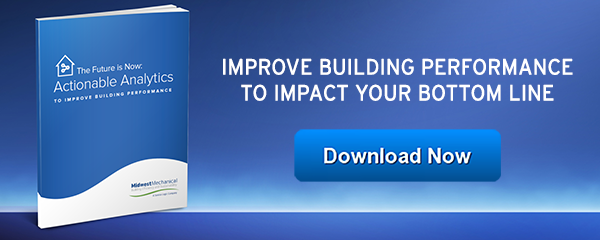How to Deal with Building Wide Pressurization in Chicago’s High Rise Buildings

Even if you’ve never heard the term “stack effect,” you’ve probably dealt with this problem at one time or another. It’s extremely common in high-rise buildings throughout Chicago, and, really, everywhere where the climate includes dramatic changes in ambient temperature.
For a really solid primer on what “stack effect” is, and the science behind it, we recommend you read this paper, published by the Council on Tall Buildings and Urban Habitat from December of 2016.
Here’s a quick summary:
“A condition that exists in a tall building when outside temperature is significantly lower than the temperature of the spaces in the building is called stack effect. Stack effect is the phenomenon in which a tall building acts as a chimney in cold weather, with the natural convection of air entering at the lower floors of the building, flowing through the building, and exiting from the upper floors.
The cause of stack effect is the difference in density between the cold, denser air outside the building and the warm, less dense air inside the building. The pressure differential created by stack effect is directly proportional to building height, as well as to the differential between the warm temperature inside the building and the cold temperature outside the building.”
Putting it even more simply, when it’s colder than 70° outside, the difference in air pressure from outside to inside a tall building causes wind — sometimes surprisingly strong — to flow through the building, from ground level up. If this difference in pressure is strong enough, it can make it difficult to open doors, wreak havoc when people are entering or exiting, and it can create a significant rise in energy costs because it exacerbates minor leaks that could be affecting the efficiency of the building’s HVAC system.
In Chicago, we’re heating our commercial buildings for at least seven or eight months of every year, so stack effect can be a real concern for commercial building owners, facility managers, and tenants alike. So, how can you determine if stack effect is a problem for your commercial facility? And, how can you counteract or eliminate stack effect so you’re not dealing with the inconvenience and/or paying more than you need to?
Identifying stack effect in your commercial high-rise
If you note any of the following issues in your high-rise commercial building, you’re likely dealing with stack effect:
- Difficulty opening or closing entrance doors - For doors that open out, it will be difficult to pull them open; for doors that open in, they may fly open, but then cause a problem when you’re trying to close them. In many cases, revolving doors can revolve too quickly.
- Elevator doors that struggle to close - In this case, air is constantly rushing up the elevator shafts, which act like a natural chimney. The result is a disconcerting hesitation when the elevator door tries to close.
- Difficulty heating the lower floors - Since hot air naturally rises anyway, stack effect will create a noticeable problem maintaining a stable temperature in the lower floors of your building. Assuming your commercial HVAC system is zoned, and you can tell which zones are most active, this should be an easy symptom to recognize.
- Loss of pressurization control - If your facility includes clean rooms, or any sort of biologic environment that relies on negative or positive pressurization to direct airflow, stack effect can negate other pressurization measures and result in contamination.
What causes building pressurization issues?
A number of potential causes can come into play, but most of them can be boiled down to one of two main categories:
- The building’s envelope is compromised - If the physical walls, roof, and/or insulation and vapor layers are seriously deficient, it can result in significant enough air leakage that stack effect can result. This issue tends to escalate quickly because leakage increases air pressure, which increases the size of leaks, which creates a self-feeding cycle.
- The ventilation system is running inefficiently or inadequately - Modern commercial HVAC systems in high-rise buildings should be designed to adequately circulate air in such a way that stack effect is greatly reduced or even eliminated. If the system is malfunctioning, or running inefficiently, stack effect can be a noticeable result.
How can stack effect be resolved or prevented?
Resolving the effects of stack effect requires a change in the situations causing the air pressure differential:
- Bring in a commercial HVAC service provider to evaluate your current ventilation system and controls - With this information in hand, you’ll be able to tell if a simple adjustment to the controls may resolve or mitigate the problem, or if a more drastic repair or replacement is necessary. The key (which should be simple, once a professional evaluates the system) is to ensure the HVAC system is always bringing in more outside air than it’s releasing as exhaust. If that can be consistently accomplished, stack effect will be a non-issue.
- Have the building envelope evaluated to resolve any major structural issues - If there are significant structural issues that are causing uncontrolled leakage of heated air out of the building, not only are you not going to be able to control the stack effect, you’re also hemorrhaging cash through wasted energy. It pays to have the matter resolved so both problems can be solved.
As Chicago’s leading commercial HVAC service provider, we would be delighted to answer any questions you have regarding the impact of stack effect on your commercial facility, or to arrange an inspection of your current system to help mitigate stack effect in your Chicago high-rise building.

